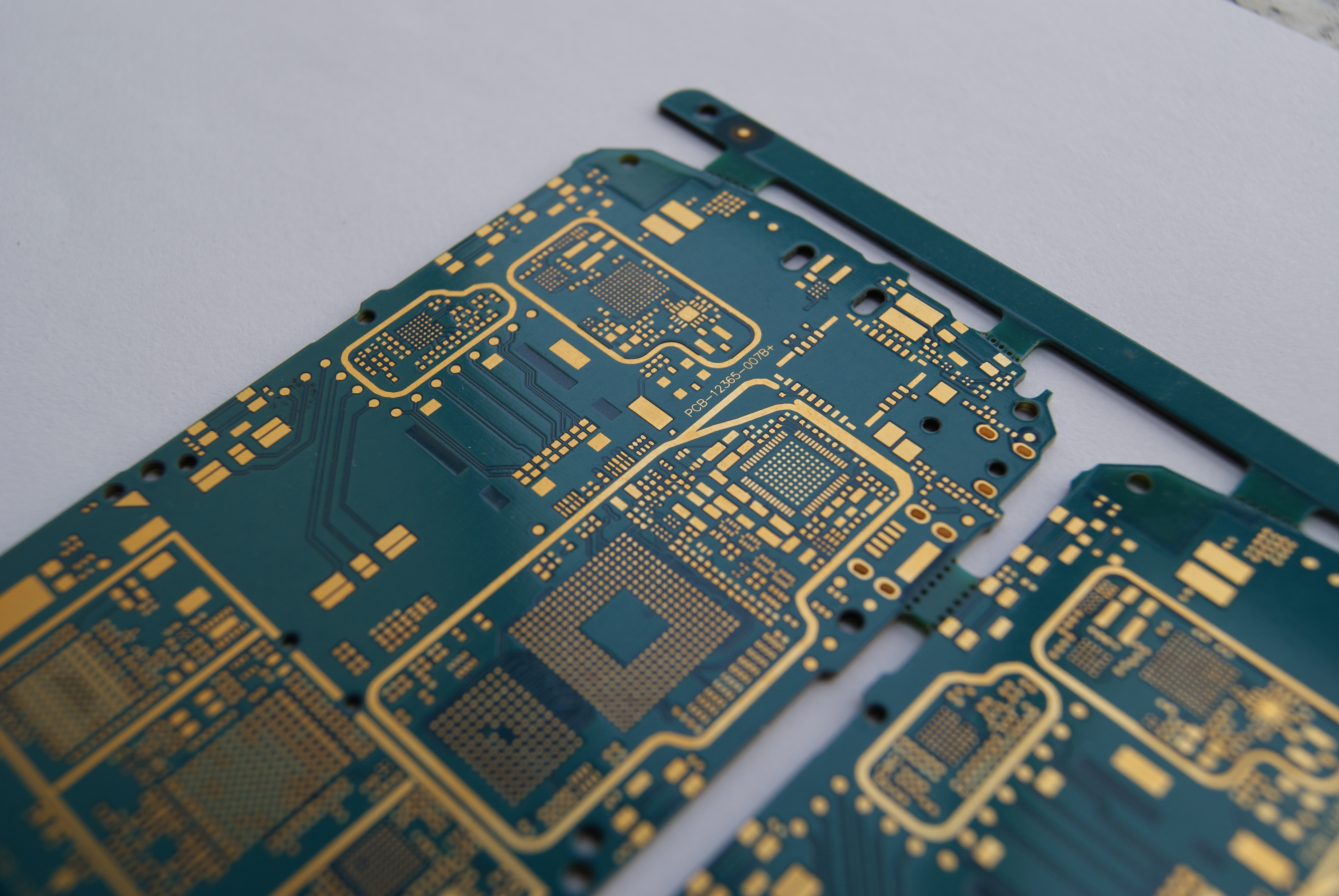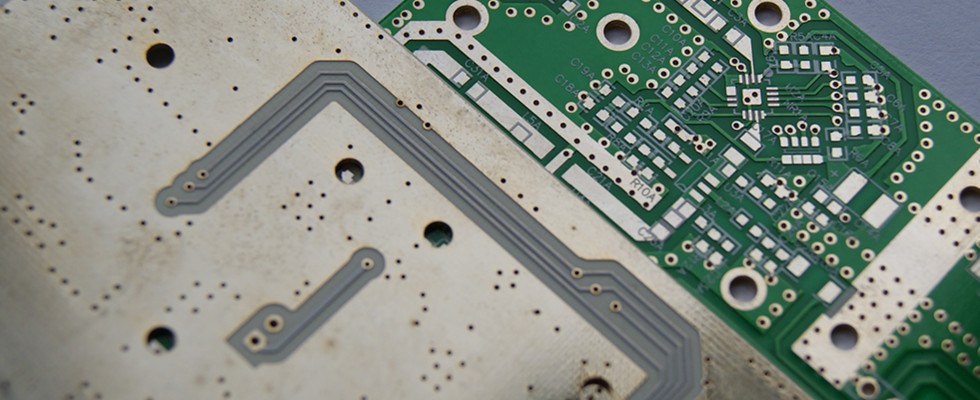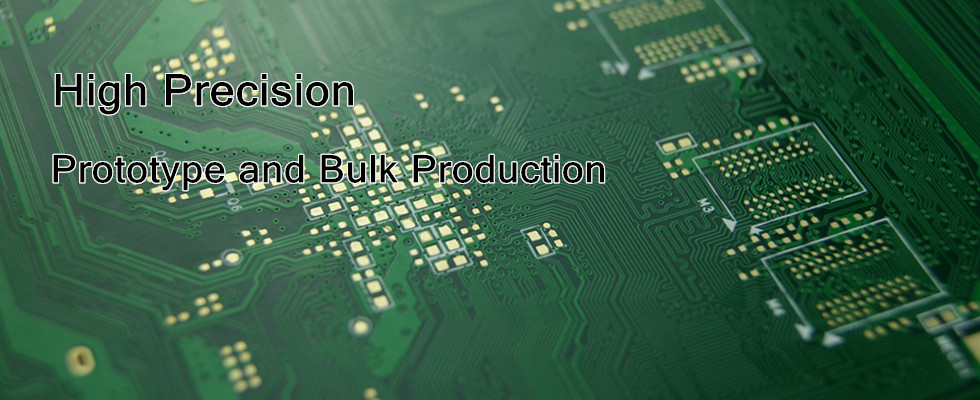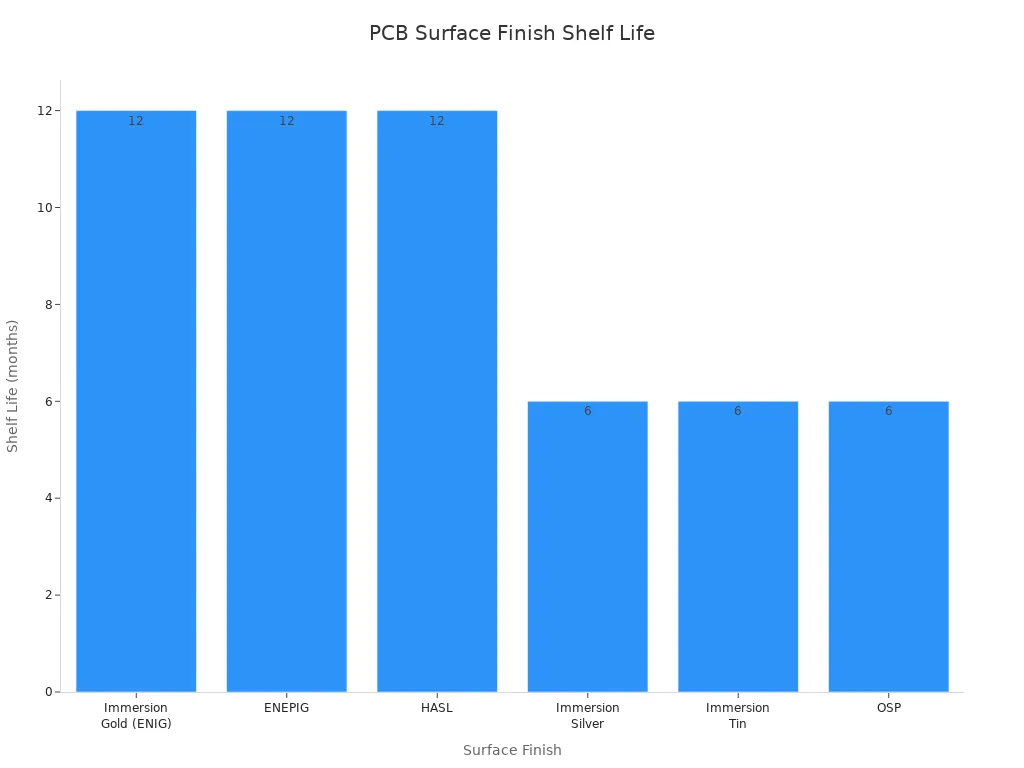7 Critical Advantages of Immersion Gold PCB Finish for High-Reliability Electronic Applications

Immersion Gold PCB Finish gives seven important benefits for reliable electronics. These are durability, better conductivity, longer shelf life, flat surface, thermal stability, lead-free compliance, and help for high-density designs. Electroless Nickel Immersion Gold (ENIG) uses a nickel barrier and a thin gold layer. These protect copper, stop oxidation, and make soldering easier. These features make quality, performance, and reliability better in tough industries.
Key Takeaways
Immersion Gold PCB Finish keeps copper from rusting. It gives a smooth and flat surface. This helps make strong and reliable solder joints.
This finish lowers electrical resistance. It also stops corrosion. It makes electronic connections stable and last longer.
It supports lead-free manufacturing and meets safety rules. It keeps PCBs good for up to 12 months. This saves money and reduces waste.
Surface Durability
Hard Finish
Surface durability is very important in electronics that must work well. Immersion Gold PCB Finish gives a flat and even surface. This helps with careful soldering and putting parts together. The finish has a thin gold layer on top of a nickel barrier. This makes the surface soft but good at stopping rust and helping solder stick. But it is not as hard as Hard Gold plating.
The table below shows how Immersion Gold (ENIG) and Hard Gold plating are different:
Feature | Immersion Gold (ENIG) | Hard Gold Plating |
|---|---|---|
Gold Layer Thickness | Very thin (0.03–0.1 μm) | Much thicker (0.5–3 μm) |
Wear Resistance | Low – not suitable for friction | High – ideal for mechanical wear |
Surface Hardness | Soft surface due to thin gold layer | Hard surface due to thicker gold alloy |
Contact Endurance | Low (up to 35g force) | High (≥50g force) |
Common Uses | Fine pitch, BGA, medical PCBs | Connectors, edge fingers, RF areas |
Note: Immersion Gold PCB Finish works best where you need good soldering and rust protection. It is not good for parts that get rubbed or pressed a lot.
Damage Resistance
Engineers pick Immersion Gold PCB Finish because it fights off chemical harm and rust. The nickel barrier keeps the copper safe. The gold layer stops the surface from turning dull. This keeps the PCB safe during storage and when building devices. The finish does not stop scratches very well. But it does protect against things in the air and other damage. Devices with small parts or sensitive circuits do well with this strong and safe surface.
Electrical Conductivity
Low Contact Resistance
Electrical conductivity is very important in electronics that must work well. Immersion Gold PCB Finish puts a thin gold layer on top of a nickel barrier. This makes the surface smooth and even. The gold layer gives very low contact resistance. Low contact resistance lets electricity move easily across the surface. Devices with low contact resistance use less energy and make less heat. This is very helpful for high-speed and high-frequency circuits. Even small losses can hurt how these circuits work.
The nickel barrier under the gold also helps a lot. When soldering, the nickel mixes with the tin in the solder. This makes a strong compound called Ni3Sn4. This compound keeps the solder joint strong and safe. The gold layer keeps the nickel from rusting before soldering. This makes sure the connection stays clean and works well.
Tip: Low contact resistance keeps signals strong and helps stop data loss in sensitive circuits.
Stable Connections
Stable electrical connections are needed for devices that must last a long time. Immersion Gold PCB Finish gives great protection from rust and oxidation. The gold layer covers the metals under it from air and water. This keeps the surface from getting damaged, even in tough places.
A smooth finish makes sure every connection point works the same way. This is very important for fine-pitch parts and BGAs. Even a small problem can cause trouble in these parts. The finish helps make strong solder joints. Strong joints are needed for stable and long-lasting connections. Over time, these features help keep current flowing well and signals clear. This makes Immersion Gold PCB Finish a great choice for reliable electronics.
Corrosion Protection

Oxidation Prevention
Immersion Gold PCB Finish helps stop oxidation on printed circuit boards. It uses a nickel layer to cover the copper. A thin gold layer sits on top of the nickel. The gold keeps air and water away from the metal. The nickel stops the copper from touching oxygen. These layers work together to stop rust and tarnish. They protect the board even in tough places. The gold also blocks dirt that can make corrosion worse.
Note: The gold layer must be smooth and even. This stops oxygen from getting in and causing harm. Storing and handling the board well helps the finish last longer.
The table below shows how different PCB finishes do in corrosion tests:
PCB Finish | Salt-Spray Test (1500 hrs) | Mixed-Flowing-Gas Test (6 weeks) | Flowers-of-Sulphur Test (5 days) |
|---|---|---|---|
ENIG (Immersion Gold) | Significant corrosion observed | Significant creep corrosion | Very little corrosion |
OSP | Significant corrosion observed | Significant creep corrosion | N/A |
Immersion Silver | Some corrosion, no failures | Lots of corrosion products | Significant corrosion |
Immersion Tin | N/A | N/A | Some corrosion |
HASL | N/A | Lots of corrosion products | N/A |
Long-Term Reliability
Engineers pick Immersion Gold PCB Finish because it lasts a long time. The gold and nickel layers protect the board for over a year. This finish keeps the board safe from rust and tarnish. It works during storage and when the board is used. Storing the board in a dry, cool place helps it last longer.
Immersion gold finishes fight corrosion better than OSP or HASL.
They give a flat, smooth surface for high-performance circuits.
The finish costs more than OSP, but it is worth it for important devices.
ENIG finishes can sometimes have a problem called "black pad." This happens when the nickel under the gold gets damaged. Careful work during making the board helps stop this. Checking the boards often and using good steps keeps the finish strong for important electronics.
Flatness and Uniformity

Fine-Pitch Support
Engineers pick Immersion Gold PCB Finish for careful part placement. The finish makes the board very flat and smooth. It uses a nickel layer that is always the same thickness. This layer is between 3 and 7 microns thick. A thin gold layer goes on top of the nickel. Flatness is very important for fine-pitch parts. These parts have pads that are very close together. A flat board stops solder from joining two pads by mistake. This keeps each connection safe and separate. The smooth finish helps machines put parts in the right place. This means more good boards and fewer mistakes in tight designs.
A flat surface helps stop soldering mistakes. This is very important for new and advanced electronics.
BGA Compatibility
Ball Grid Array (BGA) packages need a smooth and even board. Immersion Gold PCB Finish gives a steady thickness everywhere. The thin gold layer does not make solder bridge between close pads. This helps make strong and exact solder joints under each BGA ball. The finish also works well for wire-bonding and other new ways to build boards. Good BGA connections help devices work better and last longer. This is very important for electronics that must not fail.
Feature | Benefit for BGAs |
|---|---|
Ultra-flat surface | Stops solder from joining pads |
Consistent thickness | Makes sure connections are safe |
Smooth gold finish | Helps machines place parts |
Solderability
Consistent Joints
Manufacturers use Immersion Gold PCB Finish for steady solder joints. The ENIG process puts a thin gold layer on nickel. This gold layer keeps the board safe from rust and dullness. The gold surface is always smooth and flat. Solder spreads out evenly on the pads. This makes strong and steady joints. Small parts with close pads work best with this finish. The flat gold stops bridges and gaps between tiny pads. The gold also does not wear away during assembly. Every solder joint stays the same, even after many heating cycles. This helps electronics stay reliable for a long time.
Tip: A smooth gold surface helps solder stick better. This makes each connection strong and solid.
Assembly Yield
High assembly yield is important for all electronics makers. Immersion Gold PCB Finish helps by lowering problems during soldering. The ENIG process uses careful controls for solution, heat, and pH. These controls keep the nickel and gold layers just right. Quality checks test soldering, coating thickness, and how well it sticks. Certifications like ISO 9001 and IATF 16949 prove the process is trusted worldwide. Because of this, more boards pass checks. Fewer problems mean less fixing and lower costs. Good solder joints help devices last longer and break less often.
A steady finish means fewer soldering mistakes.
High yield saves both time and money when making products.
Environmental Compliance
Lead-Free
Manufacturers pick Immersion Gold PCB Finish because it is lead-free. ENIG has less than 0.1% lead, which is very low. This is much lower than what the rules allow. The finish uses a nickel barrier and a thin gold layer. Both layers do not have lead or other bad heavy metals. Companies like Sierra Circuits give papers to show their boards are safe. By choosing this finish, engineers help stop lead from polluting the earth.
Using lead-free finishes keeps workers, buyers, and nature safe from harm.
RoHS Ready
The RoHS rule controls what chemicals can be in electronics. It stops too much lead, mercury, and cadmium from being used. Immersion Gold PCB Finish follows all RoHS rules. The ENIG process does not use banned materials and uses safe chemicals. Makers use strict checks to keep dangerous stuff out of the boards. This finish helps make green electronics and helps companies follow the law.
The finish makes recycling and safe throwing away easier.
Closed-loop water systems help stop water pollution when making boards.
Modern PCB factories use safer chemicals and recycle gold from waste. These actions help lower harm to the earth when making and throwing away PCBs. Companies that use Immersion Gold PCB Finish show they care about the planet and safety rules.
Extended Shelf Life
Copper Protection
Manufacturers use Immersion Gold PCB Finish to keep copper safe. First, a nickel layer goes on the copper. Then, a thin gold layer covers the nickel. These layers make a strong shield against air and water. The gold stops moisture from reaching the copper. This keeps the copper from rusting or turning dull. Because of this, the PCB stays good for soldering for a long time. The protection helps electrical connections work well, even after many months in storage.
The gold and nickel layers work together to keep the PCB clean. This helps the board work well in tough places.
A table shows how long different PCB finishes last:
Surface Finish | Typical Shelf Life | Storage Conditions (≤27℃, ≤60% humidity, no acid/alkali/organic solvents) |
|---|---|---|
Immersion Gold (ENIG) | Yes | |
12 months | Yes | |
Hot Air Solder Leveling (HASL) | 12 months | Yes |
Immersion Silver | 6 months | Yes |
Immersion Tin | 6 months | Yes |
Organic Solderability Preservative (OSP) | 6 months | Yes |

Inventory Flexibility
A longer shelf life gives companies more ways to store PCBs. Boards with Immersion Gold PCB Finish can stay in storage for up to 12 months. They do not lose quality during this time. This lowers the chance of throwing away old boards. Companies can buy more boards at once and keep them safe. The finish protects the copper from getting damaged. This makes planning easier and saves money on rush orders or fixing mistakes.
Companies can keep PCBs ready for fast assembly.
Less waste means saving money and using resources better.
A steady shelf life helps important uses in aerospace, medical, and computers.
Longer shelf life means PCBs are ready to use, even after many months. This helps make products quickly and keeps them working well for a long time.
Immersion Gold PCB Finish gives many strong benefits. It helps with durability, conductivity, and corrosion protection. This finish also keeps the board flat and easy to solder. It meets safety rules and lasts a long time on the shelf. Experts say its flat surface and long shelf life are very important. It is used in important electronics all over the world.
Engineers should talk to PCB experts to get the best results.
FAQ
What is the main benefit of Immersion Gold PCB Finish?
Immersion Gold PCB Finish keeps copper from rusting. It also gives a smooth surface for good soldering. This helps make sure electronics work well and last longer.
Does Immersion Gold PCB Finish support lead-free manufacturing?
Yes. ENIG does not have lead and follows RoHS rules. Companies use it to make safe electronics and meet world safety laws.
How long can PCBs with Immersion Gold Finish stay in storage?
PCBs with Immersion Gold Finish can be stored for up to 12 months. The finish keeps copper safe and makes sure soldering still works during this time.
